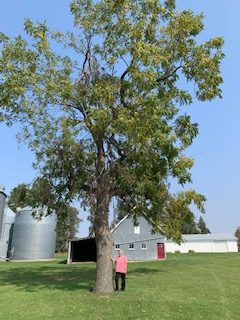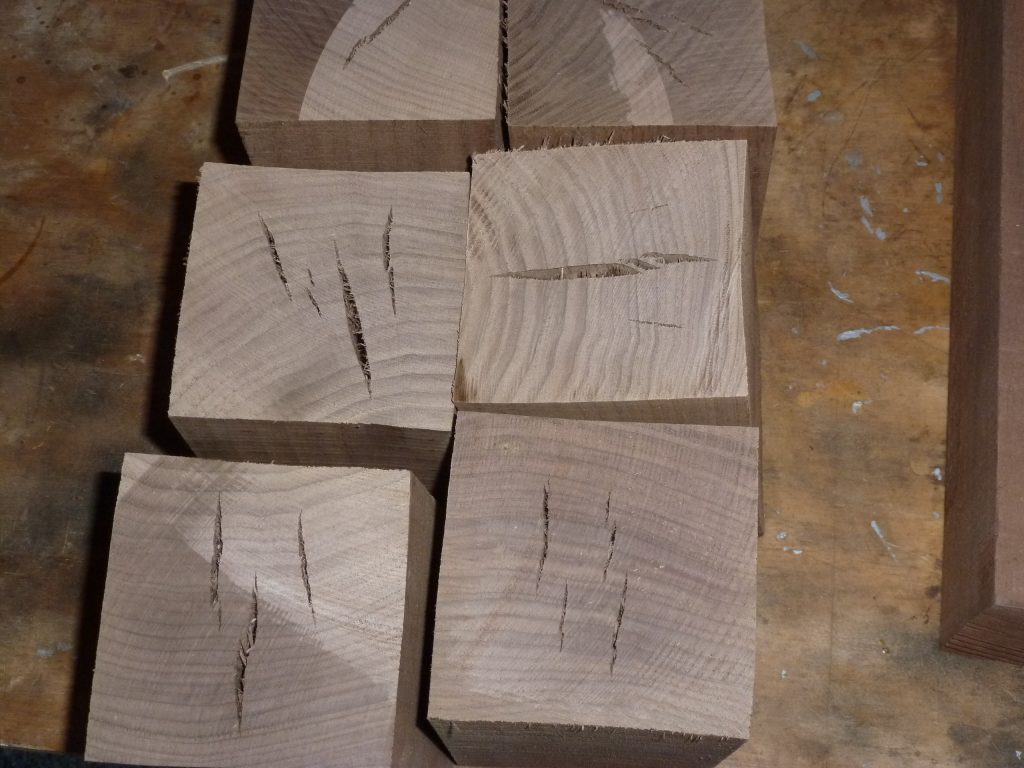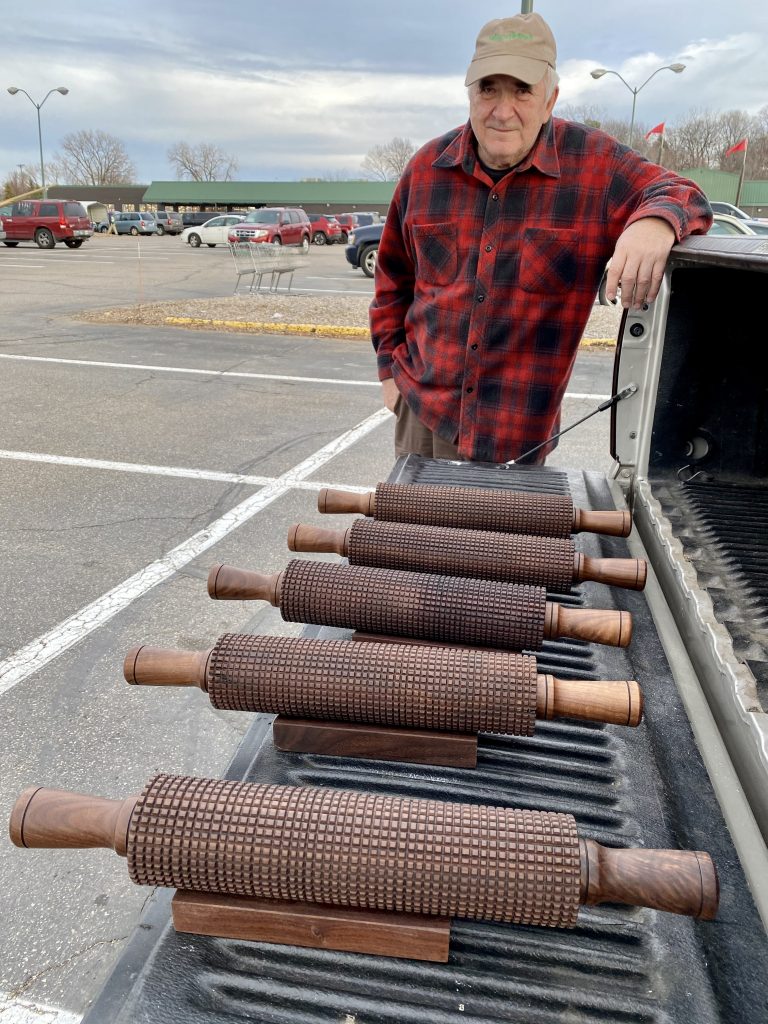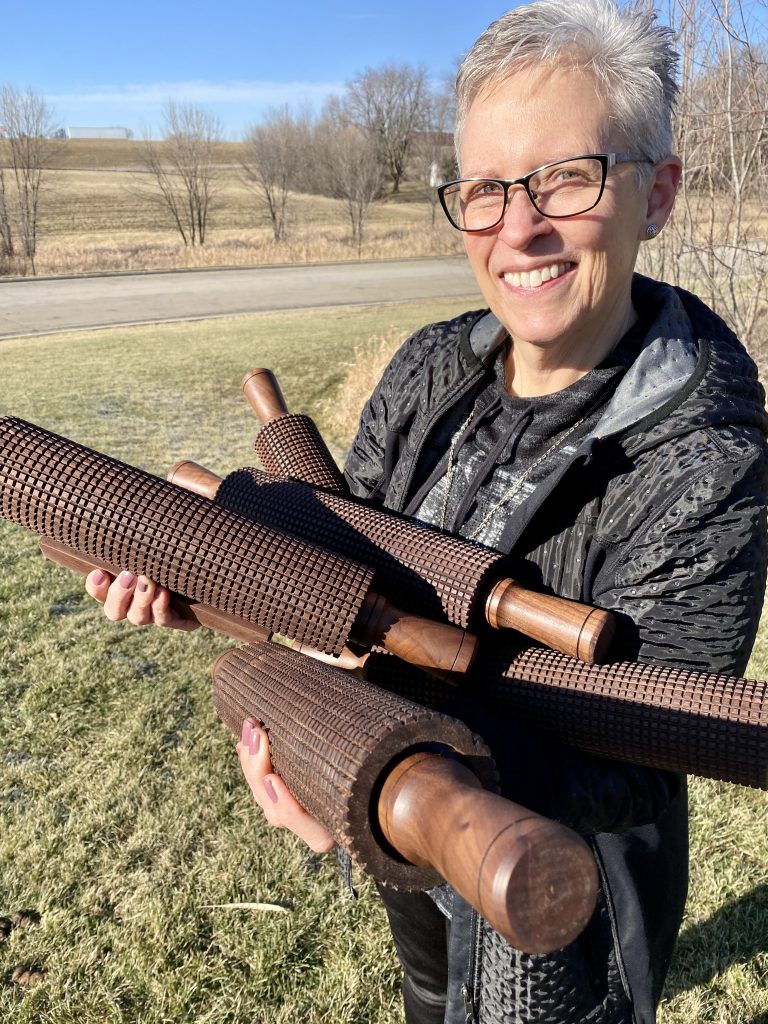Oh to be a walnut tree
Give food and shade for years
And when I’d go, I’d surely know
My wood would still bring cheers
Gary Legwold

When a derecho roared through central Iowa last summer, folks scrambled for shelter and for a definition of a term they had not heard. This windstorm was monstrous and menacing, like nothing they had seen, and they were reminded of the true meaning of the word awesome.

A walnut tree on Diane Tott’s farm near Roland, Iowa, went down in the storm. It was part of the family, a calming constant on this land that is a few years shy of being a centennial farm (in one family for 100 years).
Diane contacted me in late August to see if I could help her pull off an ambitious project: to have five lefse rolling pins made from the wood of this walnut tree. Diane wanted to give the rolling pins as Christmas gifts.
I sell Heirloom Lefse Rolling Pins, so this was a project of interest to me. There were many challenges, such as cutting the tree into manageable logs and then getting the wood to Minnesota, where my master woodturning friends would create the five lefse rolling pins.

Diane arranged for the tree to come down and the trunk be sawed into 20-inch lengths. Bob Tott, Diane’s husband, loaded four of these sawed logs into his pickup and drove them to my house in Minneapolis. The plan was I would put the logs into my Prius and drive them to a kiln in Hastings, Minnesota, where the logs would be sawed into 4-in. x 4-in. lengths and then vacuum kiln dried. These 4x4x20 blanks, once dried, would be used to make the barrel and the handles of the lefse rolling pins.

Bob arrived at my house, and my jaw dropped when I saw the size of the four logs. If he were to have rolled them off the truck bed onto the ground, they probably would sink all the way to the center of the earth they were so heavy. No way I could fit them into my Prius, even if I could lift them. So after some head scratching, Bob volunteered to take the logs to the kiln in Hastings.
Fast forward a month, and I had 71 dried walnut 4x4x20 blanks in my Prius and was driving home. Bob Puetz had agreed to make the five rolling pins on his lathe, and he came to my house to pick up 11 blanks. He wanted extra in case there were any surprises inside the blanks. That’s part of attraction with woodturning, that the beauty of the wood is hidden—or not there at all—and only reveals itself once you start turning and slowly removing wood.

Bob started working on the blanks immediately, but stopped soon after he began. Talk about surprises! The kiln drying had produced cracks that ran the full length of the pieces he had worked with, which meant he could not use these pieces to make the barrel of the turning pins. He tried piece after piece, and decided to use the five blanks that had the fewest number of cracks.
Right around Thanksgiving, Bob had managed to pull off the creation of five beautiful walnut rolling pins that, according to Diane wishes, had crosshatching, not just grooves going one way around the barrel. I met Bob at a Menards parking lot and would have wholeheartedly shaken his hand—maybe even hugged him—had not the pandemic interfered.

The first week of December, I met Diane at Love’s Travel Stop along I35 near Albert Lea, Minnesota. Turns out we had met a few years ago when I spoke at the Sons of Norway meeting in Story City, Iowa. I had wrapped the pins, and there was no small amount of anticipation as she unwrapped each of the five pins. As she did, I explained the drama with the drying of the wood, and gave her some of the bad blanks that Bob rejected. She was thrilled with the result, and I was relieved. She had her very special Christmas presents for some very special lefse makers in her life.

Coming full circle, I asked more about the walnut tree and what it had meant to her, her lefse tradition, and her Christmas celebrations through the years. So I leave you with Diane’s reflections:
Growing up on the farm near Roland, I remember this tree and a second tree placed near a very busy part of the farm, which was owned and operated by my dad and his brother. Our families lived on the farm and spent many hours playing near these trees, which held a tire swing and a bag swing. Later, I remember routinely harvesting the walnuts. We used an antique corn sheller to remove the husks, washed the walnuts, and let them dry. During cold, winter nights, my dad often sat and shelled the walnuts, which my mom would later use in her baking. Mom and Dad’s grandchildren and great grandchildren have helped with harvesting. Granddaughter Janel (my daughter) did a purple-ribbon Iowa State Fair 4-H project detailing the harvesting process. During that project, we learned we could flood the husked walnuts with water, keep the nuts that sank, and then discard the “floaters.”
I would also note that my side of the family has Norwegian and Dutch heritage. Lefse has been a big part of our family Christmas traditions. We make “hard” lefse [no potatoes]. Our lefse is traditionally served with cod, riced potatoes, just the right amount of salt and pepper, and a hard boiled egg and butter mixture. We roll them into a beta and hold it in two hands when eating. (It just doesn’t taste right if you have to eat it with a fork. Ha!). My husband, Bob, is responsible for having added salsa to the beta “recipe,” and there are now several family members who use salsa as well. We all remember my grandmother’s wide eyes the first time she saw Bob bring a jar of salsa to the Christmas table, but she became accepting of this crazy new twist. Our Christmas meal is often topped off with a lefse with butter and sugar.
Diane Tott
